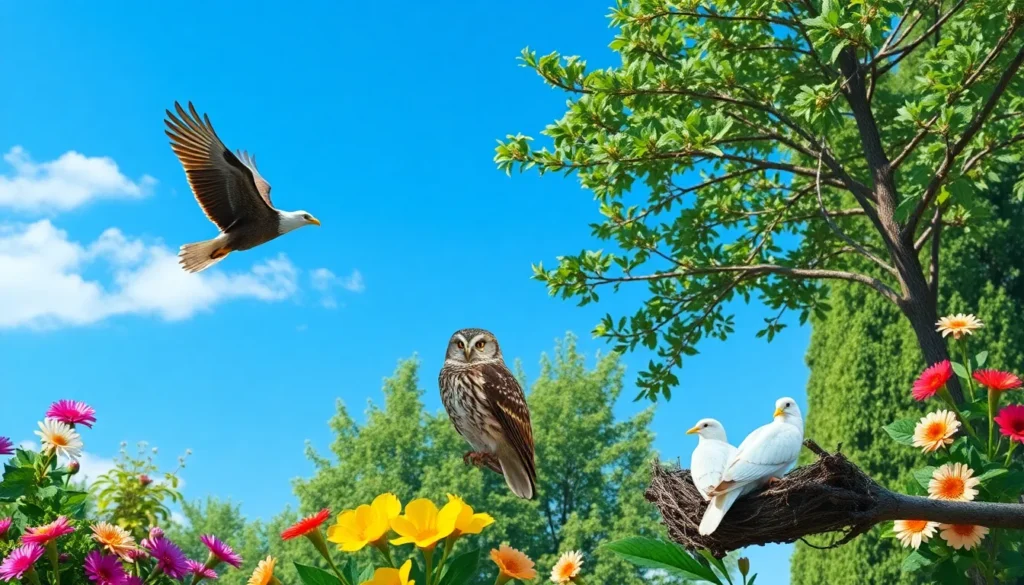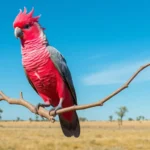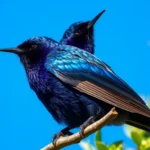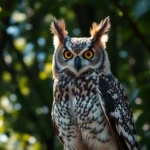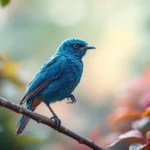Birds have captured our imagination for millennia, soaring through our dreams, myths, and spiritual beliefs as powerful messengers between earth and sky. From the wise owl representing knowledge to the majestic eagle symbolizing freedom, these winged creatures carry profound meanings that transcend cultures and generations.
We’ve woven bird symbolism into every aspect of our lives – from ancient Egyptian hieroglyphs to modern corporate logos. Whether it’s a dove bringing peace, a phoenix rising from ashes, or a raven delivering mysterious omens, birds speak to something deep within our collective consciousness. They’ve become nature’s most eloquent storytellers, each species carrying its own unique message and spiritual significance.
Understanding bird symbolism opens doors to interpreting dreams, appreciating art, and connecting with nature’s wisdom in ways you might never have imagined. Let’s explore the intriguing area where feathers meet meaning and discover how these remarkable creatures continue shaping our spiritual and cultural industry today.
The Universal Language of Bird Symbolism
Birds transcend cultural boundaries as messengers between earth and sky across civilizations worldwide. Ancient Egyptians revered the ibis as Thoth’s sacred companion while Indigenous North American tribes honored eagles as spiritual guides connecting warriors to the Great Spirit.
Cross-cultural patterns emerge when examining bird symbolism across different societies. Owls represent wisdom in Greek mythology through Athena’s sacred bird yet embody death omens in many Native American traditions. Ravens appear as trickster figures in Pacific Northwest cultures but serve as divine messengers in Norse mythology through Odin’s companions Huginn and Muninn.
Migration patterns create shared symbolic meanings across continents. Swallows symbolize renewal and hope in European folklore while Chinese culture associates them with fortune and fidelity. Cranes represent longevity in Asian traditions spanning Japan to China while African cultures view them as messengers of the ancestors.
Flight capabilities generate universal symbolic associations connecting earthbound humans to celestial realms. Soaring birds like hawks and falcons embody freedom and spiritual ascension across Mediterranean cultures while diving birds such as kingfishers represent precision and focused intention in both Celtic and Japanese traditions.
Color variations produce consistent symbolic interpretations worldwide. White birds universally signify purity and divine connection from doves in Christianity to white peacocks in Hinduism. Black birds carry dual meanings of mystery and transformation whether appearing as crows in Celtic lore or blackbirds in European folk songs.
Seasonal appearances link birds to cyclical time concepts across all inhabited continents. Spring arrivals of robins signal renewal in North American traditions while autumn departures of geese mark transition periods in Scandinavian cultures. Winter residents like cardinals provide hope symbols during dark months in temperate regions globally.
Human civilizations consistently assign maternal protection meanings to nesting behaviors observed in birds. Hen symbolism appears across cultures from Roman protective deities to modern expressions about maternal care. Dove imagery connects to nurturing aspects in traditions spanning Christianity to ancient Mesopotamian religions.
Ancient Civilizations and Bird Meanings
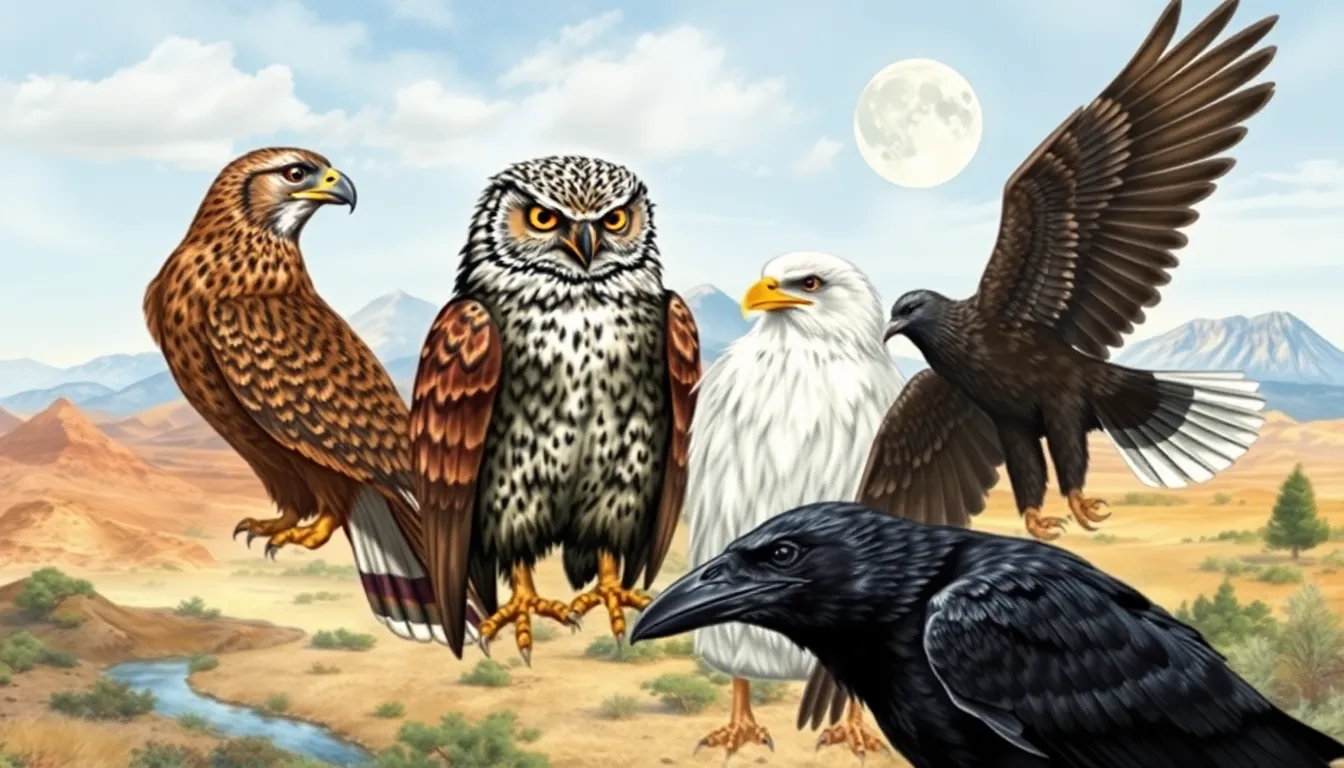
Ancient civilizations established the foundation for modern bird symbolism through complex religious systems and cultural traditions. These early societies recognized birds as divine messengers and spiritual guides that connected earthly realms with celestial powers.
Egyptian Bird Deities and Sacred Symbols
Egyptian mythology features many avian deities that governed critical aspects of life and death. Horus, the falcon-headed god, represented divine kingship and solar power while serving as protector of pharaohs. Thoth, depicted with an ibis head, controlled wisdom and writing systems that preserved sacred knowledge. Bennu, the sacred heron, symbolized rebirth and creation cycles that mirrored the Nile’s annual flooding patterns.
Egyptian hieroglyphic systems incorporated exact bird symbols with distinct meanings. The falcon hieroglyph conveyed divine authority and was associated with royal power. Ibis symbols represented sacred wisdom and scholarly pursuits. Swallow hieroglyphs indicated renewal and resurrection concepts that appeared in burial texts and tomb decorations.
Sacred bird mummification practices revealed the depth of Egyptian reverence for avian creatures. Archaeologists have discovered thousands of mummified ibises at Saqqara, demonstrating the religious significance of these birds. Falcon mummies received elaborate burial treatments similar to those given to pharaohs, emphasizing their divine status.
Greek and Roman Mythological Birds
Greek mythology established enduring bird symbolism that influences contemporary interpretations. Athena’s owl represented wisdom and strategic warfare, becoming the official symbol of Athens and appearing on ancient coins. Zeus’s eagle embodied supreme divine authority and thunderstorm powers that controlled mortal destinies. The phoenix originated from Greek traditions as a symbol of renewal and eternal life cycles.
Roman culture adopted Greek bird symbolism while adding unique interpretations. Jupiter’s eagle served as the primary military standard for Roman legions, representing imperial conquest and divine approval. Roman augurs practiced formal bird divination called “auspices,” interpreting flight patterns to predict future events and guide political decisions.
Mythological transformations frequently involved birds as symbols of divine intervention or punishment. Philomela became a nightingale after experiencing traumatic events, representing the voice of suffering transformed into art. Daedalus and Icarus demonstrated both the aspiration for divine flight and the dangers of exceeding mortal limitations.
Native American Bird Totems and Spiritual Guides
Native American traditions view birds as powerful spiritual messengers that connect tribal communities with ancestral wisdom. Eagles serve as sacred mediators between earth and sky realms, carrying prayers to the Great Spirit through their high-altitude flight capabilities. Ravens function as trickster figures and creators in Pacific Northwest cultures, possessing groundbreaking powers that shaped the natural industry.
Different tribes assign exact meanings to regional bird species based on observed behaviors and seasonal patterns. Hawks represent keen vision and hunting prowess among Plains tribes who relied on these skills for survival. Owls carry dual symbolism as wisdom keepers and death omens depending on tribal traditions and contextual appearances.
| Bird Species | Tribal Association | Primary Symbolism |
|---|---|---|
| Golden Eagle | Multiple Plains Tribes | Sacred messenger, divine connection |
| Raven | Pacific Northwest | Creator, trickster, transformation |
| Hawk | Great Plains | Vision, hunting skill, warrior spirit |
| Owl | Various Tribes | Wisdom/death (context dependent) |
| Hummingbird | Southwestern Tribes | Joy, healing, resilience |
Ceremonial practices incorporate bird symbolism through sacred rituals and artistic expressions. Feather ceremonies honor exact bird spirits and their associated powers. Dream catchers feature bird motifs that protect against negative spiritual influences during sleep. Tribal dances mimic bird movements to invoke their spiritual qualities and establish deeper connections with natural forces.
Common Birds and Their Symbolic Meanings
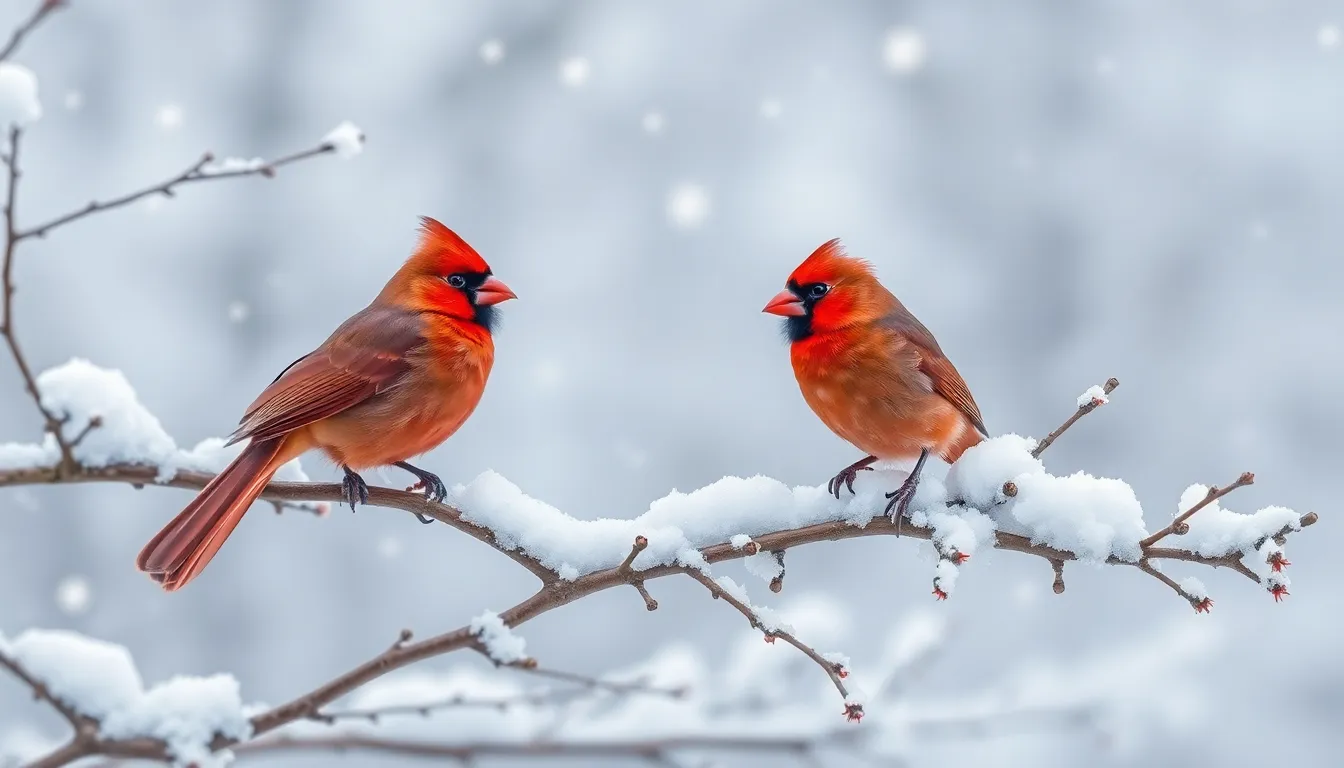
Common bird species carry distinct symbolic meanings that transcend cultural boundaries and time periods. We explore the five most important birds and their powerful symbolic associations.
Eagles: Power, Freedom, and Divine Connection
Eagles represent ultimate power and sovereignty across civilizations. Ancient Romans featured eagles on their military standards as symbols of imperial authority, while Zeus claimed the golden eagle as his sacred messenger in Greek mythology. Native American tribes view eagles as sacred beings that carry prayers to the Great Spirit, with their feathers serving as powerful talismans in ceremonial practices.
Freedom finds its perfect embodiment in the eagle’s soaring flight patterns and territorial dominance. The bald eagle became America’s national symbol in 1782, representing independence and strength. Biblical texts reference eagles 34 times, often depicting divine protection and spiritual elevation.
Divine connection manifests through the eagle’s ability to fly closest to the sun among all birds. Egyptian pharaohs adopted eagle symbolism to demonstrate their connection to solar deities. Modern spiritual practices interpret eagle sightings as messages from higher realms, encouraging personal transformation and leadership development.
Owls: Wisdom, Mystery, and the Unknown
Owls embody ancient wisdom through their association with Athena, the Greek goddess of knowledge and strategic warfare. Greek silver coins from Athens featured owl imagery to represent intellectual superiority and divine guidance. Medieval European scholars adopted owl symbols in their academic pursuits, establishing the connection between owls and learning.
Mystery surrounds owl symbolism due to their nocturnal hunting behaviors and silent flight capabilities. Celtic cultures believed owls possessed otherworldly knowledge and could see beyond the physical area. Their unique head rotation of 270 degrees symbolizes the ability to perceive hidden truths and see situations from multiple perspectives.
The unknown becomes accessible through owl encounters in various spiritual traditions. Native American Lakota tribes consider owl visits as warnings of impending change or death. Japanese folklore presents owls as protective spirits that ward off evil, while African traditions view them as messengers from ancestral spirits.
Doves: Peace, Love, and Spiritual Purity
Doves represent universal peace through their gentle nature and monogamous mating patterns. The white dove became Christianity’s symbol of the Holy Spirit after appearing during Jesus’s baptism in the Jordan River. Modern peace movements adopted dove imagery after Pablo Picasso’s lithograph “La Colombe” became an international symbol in 1949.
Love manifests through dove symbolism in ancient Greek and Roman cultures, where they served as sacred birds to Aphrodite and Venus. Wedding ceremonies across cultures incorporate white doves to bless marriages with fidelity and harmony. Their cooing sounds represent tender communication between partners and divine beings.
Spiritual purity flows through dove representations in multiple religious traditions. Islamic texts describe doves as protective spirits that sheltered Prophet Muhammad during his migration to Medina. Hindu scriptures associate doves with the heart chakra and compassionate love. Their white coloration universally symbolizes cleansing, renewal, and divine grace.
Ravens and Crows: Death, Magic, and Transformation
Ravens carry death symbolism through their scavenging behaviors and black plumage across European folklore. Celtic mythology presents ravens as battlefield spirits that determine warrior fates, while Norse tradition features Odin’s two ravens, Huginn and Muninn, as gatherers of worldly knowledge. Their presence at execution sites in medieval times reinforced associations with mortality and judgment.
Magic permeates raven symbolism in indigenous cultures worldwide. Pacific Northwest tribes honor Raven as the creator deity who brought light to the industry through cunning and transformation. European witch trials documented ravens as familiar spirits that assisted in supernatural practices. Their intelligence levels, comparable to seven-year-old children, support beliefs in their magical capabilities.
Transformation occurs through raven encounters in shamanic traditions and modern spiritual practices. Siberian shamans consider ravens as psychopomps that guide souls between worlds during death transitions. Their ability to mimic human speech represents communication bridges between physical and spiritual realms. Contemporary interpretations view raven appearances as catalysts for personal metamorphosis and shadow work.
Cardinals: Hope, Vitality, and Spiritual Messages
Cardinals symbolize hope through their vibrant red coloration and year-round presence in North American landscapes. Their appearance during winter months represents perseverance through difficult circumstances and faith in future renewal. Catholic traditions associate cardinals with the blood of Christ and eternal life promises.
Vitality emanates from cardinal symbolism through their energetic behaviors and bold territorial displays. Their bright red feathers represent life force energy and passion in various spiritual interpretations. Native American Cherokee traditions view cardinals as messengers of good fortune and relationship harmony.
Spiritual messages arrive through cardinal encounters in contemporary belief systems. Many cultures interpret cardinal sightings as visits from deceased loved ones or guardian angels. Their distinctive calls and fearless approach to humans suggest divine communication attempts. Religious communities often view cardinals as confirmations of prayers answered or divine presence during challenging times.
Bird Symbolism Across Different Cultures
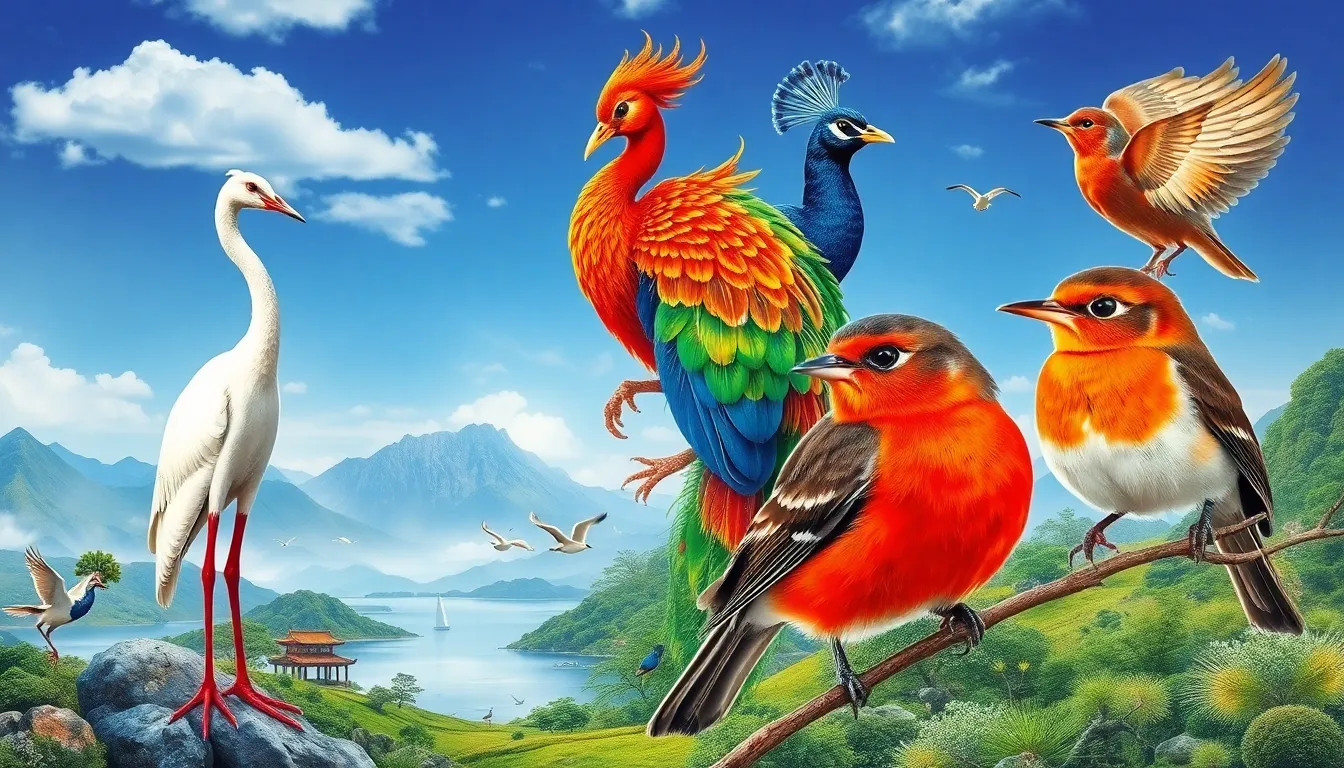
Bird symbolism varies dramatically across cultures, yet certain species maintain remarkable consistency in their spiritual significance. Cultural interpretations of avian messengers reflect regional ecosystems, religious beliefs, and ancestral wisdom passed through generations.
Asian Perspectives on Bird Meanings
Asian cultures developed intricate bird symbolism systems spanning thousands of years of spiritual tradition. Cranes occupy the highest position in Chinese and Japanese cultures, representing longevity, wisdom, and marital fidelity through their lifelong pair bonds and graceful movements.
Phoenix mythology permeates Asian spiritual practices, symbolizing rebirth, renewal, and imperial power across China, Japan, and Korea. The Fenghuang appears during prosperous times and signals virtuous leadership in Chinese folklore.
Peacocks hold sacred status in Hindu traditions, with their feathers adorning Krishna’s crown and representing divine protection and watchfulness. Buddhist cultures associate peacocks with compassion and vigilance against spiritual poison.
Swallows bring fortune and happiness to Chinese households, with their spring arrival marking prosperity and family harmony. Japanese culture celebrates the crane’s thousand-year lifespan through origami traditions and wedding ceremonies.
Mandarin ducks symbolize love and marriage fidelity in Chinese culture, often depicted in pairs on wedding gifts and romantic artwork. Their monogamous nature reinforces their association with lasting partnerships and marital bliss.
Celtic and European Bird Traditions
Celtic spirituality intertwined deeply with bird symbolism, viewing avian creatures as supernatural messengers between worlds. Ravens served as companions to Celtic gods like the Morrigan, representing prophecy, war, and transformation through their intelligence and dark plumage.
Robins became Christianity’s beloved symbols in European folklore, with their red breasts linked to Christ’s blood and resurrection stories. European traditions view robins as deceased loved ones visiting earth during difficult times.
Magpies generated complex superstitions across European cultures, with their numbers determining fortune or misfortune through traditional counting rhymes. Single magpies bring sorrow while pairs indicate joy in British folklore.
Blackbirds carry mystical significance in Celtic mythology, singing enchanted songs that transport listeners to otherworldly realms. Their melodious calls during dawn and dusk mark transitions between day and night cycles.
Swans embody purity and transformation in Celtic legends, with stories of swan maidens and shape-shifting between human and bird forms. European cultures associate swans with grace, love, and spiritual evolution through their elegant appearance.
Larks represent joy and resurrection in Christian European traditions, with their soaring flight patterns symbolizing souls ascending to heaven. Their dawn songs herald new beginnings and divine messages across various European cultures.
African Bird Symbolism and Folklore
African cultures developed rich bird symbolism reflecting the continent’s diverse avian species and tribal traditions. Egyptian ibis birds held sacred status as representations of Thoth, the god of wisdom and writing, with their curved beaks resembling hieroglyphic scribes’ tools.
Weaver birds symbolize community cooperation and skilled craftsmanship across sub-Saharan African cultures, with their intricate nest construction representing social unity and traditional architectural knowledge.
Secretary birds embody protection and hunting prowess in East African folklore, with their distinctive crest feathers and snake-hunting abilities marking them as powerful totems for warriors and hunters.
Hornbills carry spiritual significance in West African traditions, representing communication between living and ancestral spirits through their prominent casques and loud calls echoing through forest canopies.
Flamingos symbolize balance and community in African cultures, with their one-legged standing posture representing meditation and their flocking behavior indicating social harmony and collective strength.
Guinea fowl appear in African creation myths as teachers of survival skills, with their spotted plumage representing scattered knowledge and their ground-dwelling habits symbolizing practical wisdom for earthly living.
African fish eagles serve as national symbols across multiple countries, representing freedom, power, and divine authority through their impressive hunting abilities and distinctive calls echoing across African waterways.
Modern Interpretations of Bird Symbolism
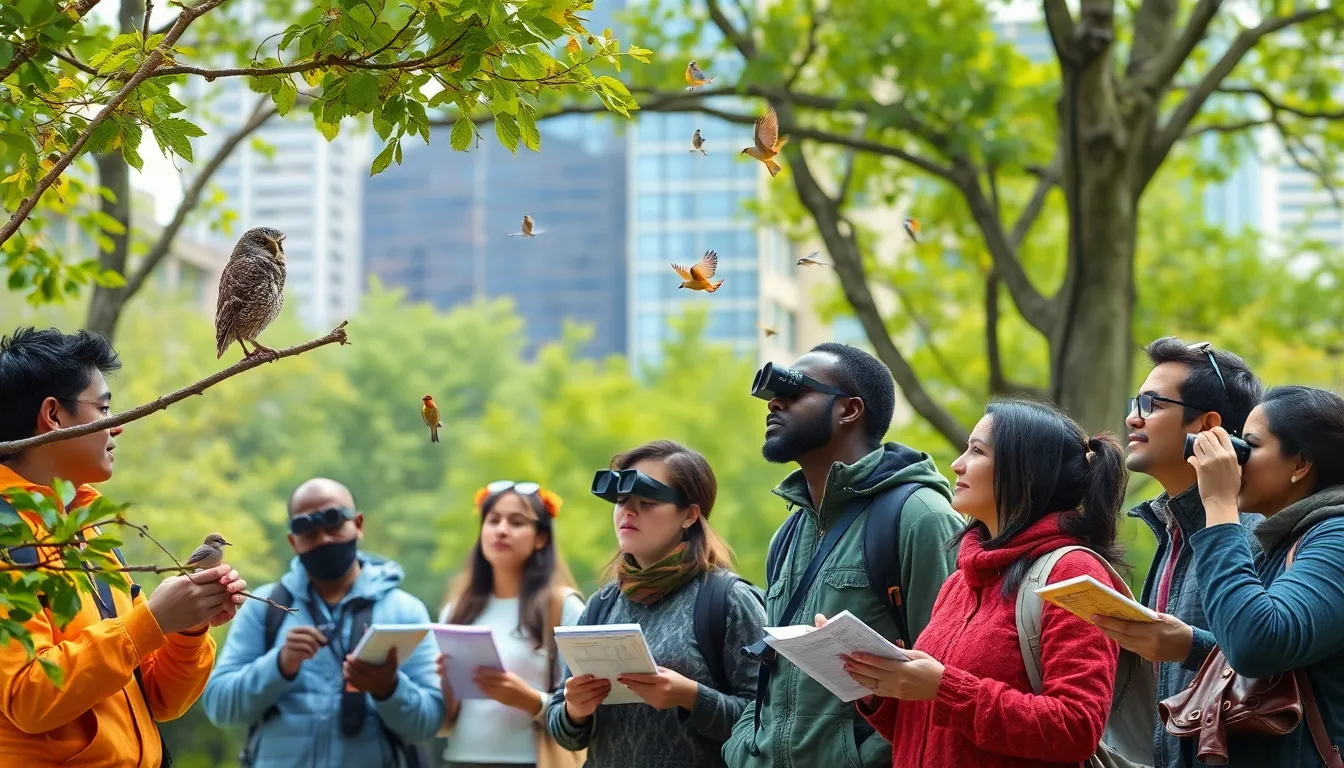
Contemporary society continues to embrace bird symbolism while adapting ancient meanings to reflect modern values and experiences. We observe how literary works, spiritual movements, and digital culture reshape traditional bird interpretations for today’s audiences.
Birds in Literature and Poetry
Authors transform traditional bird symbolism into complex literary devices that explore human psychology and societal themes. Maya Angelou’s “I Know Why the Caged Bird Sings” uses the caged bird as a metaphor for oppression and the yearning for freedom, while the singing bird represents resilience and hope even though adversity. Edgar Allan Poe’s “The Raven” reimagines the raven’s role as death messenger into a symbol of persistent grief and psychological torment.
Modern poets like Ted Hughes in “Crow” present birds as archetypal figures representing chaos, creation, and primal forces. Contemporary literature frequently employs migration patterns as metaphors for human displacement and identity searching. Writers use nesting behaviors to symbolize home creation, security seeking, and familial bonds in urban settings.
Fantasy literature expands bird symbolism beyond traditional boundaries, creating magical creatures like phoenixes representing personal transformation and rebirth after trauma. Science fiction authors use bird flight mechanics as inspiration for technological advancement and human evolution themes. Children’s literature adapts bird symbolism to teach values like courage (eagles), wisdom (owls), and friendship (various songbirds).
Contemporary Spiritual and New Age Meanings
New Age practitioners integrate bird symbolism with modern spiritual practices, creating personalized meaning systems that blend ancient wisdom with contemporary needs. Animal spirit guides featuring birds offer direction for meditation, healing, and personal growth journeys. Practitioners assign exact birds to chakra alignments, with peacocks representing the crown chakra and cardinals connecting to the heart chakra.
Oracle card systems feature bird imagery to provide daily guidance and spiritual insights for decision making. Modern shamanic practices incorporate bird totems as power animals that assist with spiritual journeying and consciousness expansion. Urban bird watching becomes a mindfulness practice where practitioners interpret bird encounters as synchronicities and divine messages.
Crystal healing combines bird symbolism with gemstone properties, using eagle imagery with clear quartz for clarity and owl symbols with amethyst for intuitive development. Yoga practices integrate bird poses like crow and eagle with their symbolic meanings to enhance physical and spiritual benefits. Dream interpretation frameworks assign modern psychological meanings to bird appearances, connecting ancient symbol wisdom with contemporary therapeutic approaches.
Energy healing modalities use bird symbolism for aura cleansing and chakra balancing, with practitioners visualizing exact birds to channel desired energetic qualities. Social media platforms create communities where individuals share bird encounter stories and interpret their symbolic meanings within modern life contexts.
How to Interpret Bird Encounters in Daily Life
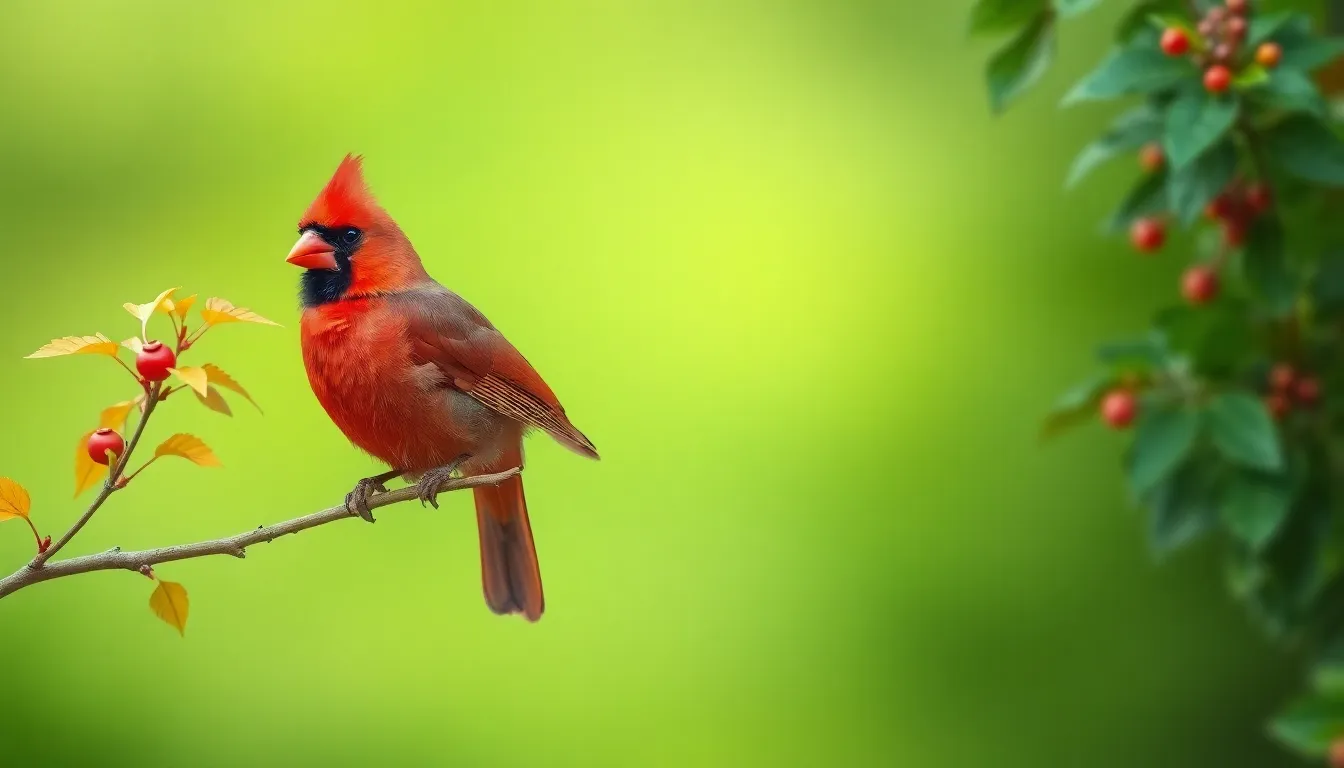
Bird encounters offer tangible connections to the symbolic meanings we’ve explored throughout history and across cultures. Timing becomes our first consideration when interpreting these encounters, as birds appearing during moments of transition or decision-making carry heightened significance.
Recognizing Important Bird Encounters
Unusual bird behavior distinguishes meaningful encounters from routine wildlife observations. Birds that approach unusually close, maintain prolonged eye contact, or appear in unexpected locations demand our attention. Repeated sightings of the same species within short timeframes amplify the symbolic message being conveyed.
Exact behaviors enhance interpretive value:
- Direct approach indicates urgent spiritual communication
- Circling patterns suggest protection or divine oversight
- Calling persistently represents messages requiring immediate attention
- Appearing in groups amplifies collective spiritual guidance
Environmental Context and Timing
Location context shapes encounter interpretation significantly. Birds appearing near our homes connect to family and security themes, while workplace encounters relate to career and professional guidance. Natural settings like forests or water bodies enhance spiritual connection, whereas urban encounters emphasize adaptation and resilience messages.
Seasonal timing provides additional interpretive layers. Spring encounters emphasize renewal and new beginnings, summer appearances highlight abundance and growth, autumn sightings suggest preparation and harvest, and winter encounters focus on endurance and inner reflection.
Personal State During Encounters
Our emotional and mental state during bird encounters influences their meaning. Encounters occurring during periods of grief often carry comfort and transition messages, while those during celebration amplify joy and achievement themes. Moments of confusion or uncertainty typically receive guidance and clarity through bird symbolism.
Physical sensations accompanying encounters enhance significance. Sudden temperature changes, tingling sensations, or heightened awareness indicate stronger spiritual connections. These bodily responses validate the encounter’s importance beyond coincidence.
Recording and Tracking Patterns
Maintaining an encounter journal reveals patterns and recurring themes over time. Document the species, behavior, location, time, weather conditions, and your emotional state for each important encounter. Weekly reviews identify emerging patterns and evolving spiritual messages.
Digital apps help track encounters efficiently. iNaturalist, eBird, and Merlin Bird ID provide identification assistance while maintaining personal records. Photography captures visual details for later reflection and pattern analysis.
Practical Integration Techniques
Daily meditation incorporating recent bird encounters deepens understanding and connection. Visualize the encounter, focus on the bird’s exact characteristics, and allow intuitive insights to emerge naturally. Regular practice strengthens interpretive abilities and spiritual awareness.
Creating personal bird symbolism references based on our encounters personalizes traditional meanings. Note how exact species consistently appear during particular life circumstances or emotional states. These individualized associations enhance accuracy in future interpretations.
| Bird Species | Common Encounter Contexts | Personal Interpretation Framework |
|---|---|---|
| Cardinal | Morning appearances, difficult decisions | Divine guidance, spiritual strength |
| Blue Jay | Communication challenges, family issues | Clear expression, protective instincts |
| Hawk | Career transitions, leadership moments | Vision clarity, strategic thinking |
| Robin | New beginnings, spring activities | Fresh starts, optimistic outlook |
| Crow | Problem-solving situations, crossroads | Intelligence application, transformation |
Conclusion
Bird symbolism continues to enrich our lives in ways we’re only beginning to understand. Whether we encounter these winged messengers in dreams spiritual practices or daily walks their meanings remain as relevant today as they were thousands of years ago.
We can tap into this ancient wisdom by staying open to the messages birds bring us. Each flutter of wings carries potential significance and every unexpected encounter might offer guidance we didn’t know we needed.
The next time a bird crosses our path we’ll have the tools to decode its symbolic language. Through mindful observation and personal reflection we can deepen our connection to nature’s most powerful spiritual messengers and unlock the profound wisdom they’ve shared with humanity throughout time.
Frequently Asked Questions
What do birds symbolize across different cultures?
Birds serve as universal symbols connecting earth and sky, representing concepts like wisdom, power, peace, and transformation. While specific meanings vary by culture, common themes include owls symbolizing wisdom, eagles representing power and freedom, doves embodying peace, and ravens associated with mystery and transformation. These symbols transcend cultural boundaries while adapting to local beliefs and ecosystems.
How did ancient civilizations use bird symbolism?
Ancient Egyptians revered birds as divine messengers, with deities like Horus (falcon) and Thoth (ibis) representing kingship and wisdom. They used bird hieroglyphs in writing and mummified sacred birds. Greeks associated birds with gods—Athena’s owl symbolized wisdom, Zeus’s eagle represented divine authority. Romans adopted these symbols and incorporated birds into divination practices for guidance.
What role do birds play in Native American traditions?
In Native American cultures, birds serve as spiritual guides and totems with deep ceremonial significance. Eagles are considered sacred mediators between earth and sky, while ravens are viewed as creators and tricksters. Different tribes attribute specific meanings to regional species, incorporating bird symbolism into rituals, artistic expressions, and spiritual practices to honor their connection with nature.
How do modern interpretations of bird symbolism differ from traditional ones?
Modern interpretations blend traditional meanings with contemporary values and experiences. Literature uses birds as complex literary devices exploring human psychology and social issues. New Age movements integrate bird symbolism into personalized spiritual practices, using them as spirit guides in meditation, oracle cards, and energy healing. Urban bird watching has become a mindfulness practice connecting people with nature.
How can I interpret bird encounters in my daily life?
Pay attention to timing, unusual behaviors, and environmental context during bird encounters. Keep an encounter journal noting species, location, your emotional state, and circumstances. Consider the traditional symbolism of specific birds—cardinals may represent hope and spiritual messages, while repeated sightings might indicate important life transitions. Integrate these experiences into meditation for deeper personal understanding.
What do specific bird colors represent symbolically?
Bird colors carry universal symbolic meanings across cultures. White birds typically signify purity, peace, and spiritual guidance. Black birds embody mystery, transformation, and connection to the unknown. Red birds like cardinals represent vitality, passion, and divine messages. Blue birds symbolize happiness and spiritual communication, while golden or yellow birds often represent enlightenment and divine wisdom.
Why are birds considered spiritual messengers?
Birds’ ability to fly between earth and sky makes them natural symbols of spiritual communication across cultures. Their migration patterns, seasonal appearances, and flight capabilities create associations with divine messages, transformation, and connection between physical and spiritual realms. Many traditions view unexpected bird encounters as signs or guidance from spiritual forces or deceased loved ones.

